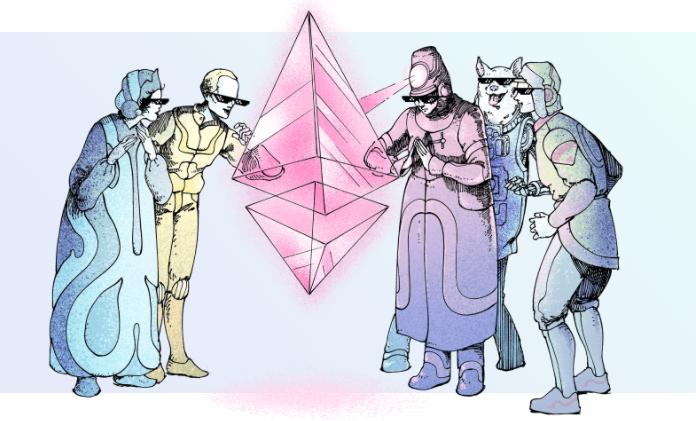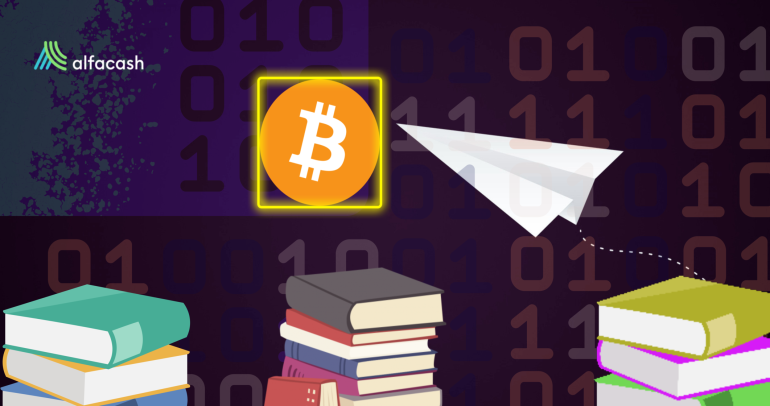We can say Ethereum isn’t exactly your common blockchainBlockchain is a type of database storing an immutable set of data, verifiable to anyone with access to it —through... with cryptocurrencyA digital currency running on a blockchain and built with cryptography. Contrary to central-bank issued currency, cryptocurrency issuance rules are... More for investment or payment method. It can be an investment and a payment method, of course, but its main purpose is working as a decentralized blockchain computer to create new tools and applications.
As they said on the official webpage:
“Ethereum is a technology that lets you send cryptocurrency to anyone for a small fee. It also powers applications that everyone can use and no one can take down (…) Ethereum is programmable, so you can also use it for lots of different digital assets – even BitcoinBitcoin is the first decentralized digital currency. It was created in 2009, by an anonymous founder or group of founders... More! This also means Ethereum is for more than payments. It’s a marketplace of financial services, games, and apps that can’t steal your data or censor you”.
To meet its goal, the current Ethereum blockchain counts with its own programming language dubbed “Solidity” to create smart contracts; a transactionA cryptocurrency transaction is an entry on the blockchain ledger, noting sender, receiver and number of coins transacted. More system with the “gas” to measure the cost of every action on the network; and a kind-of-CPU called “Ethereum Virtual Machine”, where the applications can be created by developers.
And this it’s fine, but it can be better. Currently, Ethereum can’t support a massive quantity of users without lagging and fail, so, its developers are working hard to improve the network. That’s why they’re planning to deploy Ethereum 2.0 soon.
What is Ethereum 2.0 (Eth2)?
Also dubbed “Serenity” sometimes, Eth2 is described as “The Ethereum we know and love, just more scalable, more secure, and more sustainable”. To make this possible, there will be a set of upgrades (phases) within the Ethereum software in the next years, starting by December 2020.

Those upgrades aren’t easy to implement, though. The developers have spent years already devising them, and still, the work is in progress. That’s because Eth2 will be, basically, a complete novel Ethereum with new features, another validation system, and new ways to transact value.
The vision for this future blockchain is the support for even 100.000 transactions per second (TPS), against the current 15 TPS; stronger security against all kinds of attacks, and a greener network that consumes much less energy and equipment, which could even run on a smartphone.
Phase 0 will split Ethereum in two (kind of)
The very first step in the journey to Eth2 is phase 0 planned for December 1th 2020, in which there’ll be implementing something called “Beacon Chain”. Basically, this a whole new blockchain that’ll work with the validation system Proof of StakeProof of Stake (PoS) was created as an alternative to Proof of Work (POW), supporting cheaper and faster transactions. It... More (PoS) instead of the current Proof of Work (PoW), and it’ll work for the governance of the entire system.
To sum it up, this means no more ETH mining for the future. With PoS, there’s no need for sophisticated equipment or high power consumption to validate transactions and apps, but just people with some quantity of ETH locked (staked) inside the platform. With 32 ETH (around $14.7k) by at least 16.384 validators, to be more specific.

The nodes (devices with the installed Eth2 software) of these people, will —eventually— take the transactions from the other chains and process them at high velocity to receive some ETH rewards as if they were mining. Wait, other chains you said? Uh, yeah. We mean the “Shard chains”, but that’s for Phase 1. Hang on a moment.
In the meantime, not much is going to change. Ethereum will technically split in two, but the Beacon Chain won’t have for now any other function beyond organizing and testing the PoS validators. So, don’t worry, you don’t need to do anything this December unless you want to stake ETH and become a validator for the future Eth2 —and receive the eventual rewards.
The deposits for staking are already available on the official web, but you must know something first: those 32 ETH will be totally unusable until “The Docking” (phase 2) is complete. And that’s not going to happen till 2022, at least.
Phase 1 will split Ethereum into 64… what?
Let’s retake the “Shard Chains” here. Imagine the Ethereum blockchain as an immense pile of files, full of transactions in binary language (0s and 1s). The current chain size is over 180 GB, while the archived full nodes are already reaching 5.6 TB. That’s huge. Who has available such a space in their devices?
This also means the network can get congested more easily, and the transaction speed can decrease more and more. And that’s where the “Shard Chains” come in: these will be 64 new blockchains (shards) that will split and distribute the huge load of the entire database to gain more speed and reduce hardware requirements.
With this function, the PoS validators (from the Beacon Chain) won’t need to store and run the entire blockchain, but only one shard. It’s less work for them, less power consumption for the environment, and more speed for the users. They’re aiming to 100.000 TPS, indeed.
Now, these shards will be able to run code and, therefore, functions like smart contracts, or are they only to split the storage? This is still on discussion, but it’s probable that, at least in the beginning, they’ll be only for storage.
Phase 1 is planned by some point in 2021. And no, probably you won’t need to do anything yet, because the current Ethereum mainnet will coexist with the Beacon Chain and its shards till “The Docking”.
Phase 2 will merge and improve the pieces
Well, this is “The Docking”. The current Ethereum mainnet will finally merge with the Beacon Chain, becoming another shard and bringing with it the full Ethereum history and the ability to write smart contracts and make faster transactions; all verified with PoS.

This will be the ultimate end of the PoW mining era in Ethereum. The developers describe it this way:
“Imagine Ethereum is a space ship that isn’t quite ready for an interstellar voyage. With the Beacon Chain and the shard chains, the community has built a new engine and a hardened hull. When it’s time, the current ship will dock with this new system so it can become one ship, ready to put in some serious light-years and take on the universe”.
The developers and the community will decide at this point if the other shards should have extra functions, similar to the current Ethereum mainnet, or if they’ll stay only to provide data. What should you do? For now, wait for further instructions till 2022 or later, when this phase is implemented.
Phase 3 is… a question yet
The Beacon Chain, the shards, and The Docking aren’t the only plans for the Ethereum future, but the other potential improvements don’t have specific dates yet. Maybe the more important pending change is the Ethereum WebAssembly (eWasm), which will replace the current EVM —you know, the CPU, the “core” of the whole network.
This improved machine will let to create new kinds of smart contracts and applications (including DeFi) in a faster and safer way, and with more programming languages besides the complex Solidity. The system will also let the shards communicate and interact with each other.

Another interesting function planned is the addition of Zero-Knowledge Scalable Transparent Arguments of Knowledge (ZK-STARKs). By implement them within the network, the transactions will be private, because they will let to share verified information “or perform computations with a third party without the data or computation being revealed to the third-party”.
According to Vitalik Buterin, the Ethereum founder, Eth2 and further improvements will take from five to even ten years of work after the initial Beacon Chain deployment. We have still time, then.
And what about Ethereum 2.0 prices?
Well, an improved Ethereum sounds like the price of its native currency, the ETH, will skyrocket to the moon, right? That’s a possibility, yes, but isn’t the only possibility.

It’s been theorized that the additional supply of ETH for PoS validators’ rewards may devalue the price of the currency because a higher amount of existing units would mean a lower value for every unit (inflation).
However, this is debatable, because, at the same time, around 524.288 ETH will be put out of circulation for the staking on the Beacon Chain. That means the liquid supply of ETH will be lower, and, therefore, the existing units can acquire more value; only if the velocity of exchange doesn’t decrease.
Afterward, it’ll happen the logical thing: if the planned updates work as planned, the ether can reach new highs. If not, a negative impact on the price would come. For now, it’s a bet put on the talent of Ethereum developers and their vision.
Wanna trade BTCAn abbreviation for Bitcoin., ETH, and other tokens? You can do it safely on Alfacash! And don’t forget we’re talking about this and a lot of other things on our social media.
Twitter * Telegram * Instagram * Youtube *Facebook * Vkontakte








